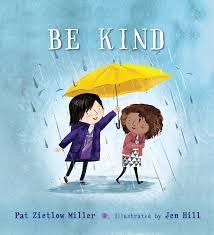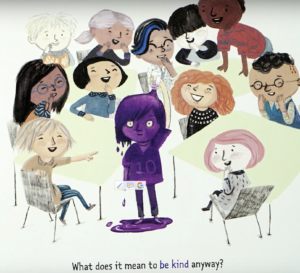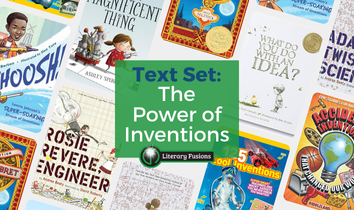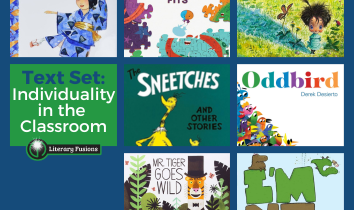Why I Picked It Up:
The title! We are at a place in this world where we NEED to teach kids to be kind. Between politics, social media, and bullying, our kids are surrounded by astronomical levels of negativity and meanness! I’m collecting books on kindness and I will inundate our future with love and compassion!
Why I Finished It:
It’s a beautifully simple, yet complex text – my favorite kind. The message, obviously, is be kind. It illustrates for students different ways to be kind and empathetic, but it also acknowledges the fact that it’s not always easy. I’m raising three kids at the moment, and if there’s one thing I understand, it’s that being “good” or “right” is hardly ever easy. Choosing to stand up for someone, to protect someone’s feelings, to go the extra mile to be nice, can be taxing and sometimes put a target on YOUR back. I think it’s important that we let students know that we get that part I love that this book clearly states that being kind can be difficult. The message is clear and beautiful – if we all choose to be kind in the smallest ways, all together, it will be huge!
Who I Would Give It To:
This book is perfect for the youngest kids through Grade 2, reading teachers, moms, dads, aunts, uncles, etc. Let’s start sharing ways our future can be kind and generous.
Integration Ideas:
Make Predictions
Prior to class, create an anchor chart that says Ways to be Kind at the top. As students offer suggestions, add them to the chart and write their names next to each one.
While reading, stop at the page when the main character questions what it means to be kind. Ask the students for their predictions. Next, ask students to think of how the girl could be kind to Tanisha.
As you continue reading the story add the ideas to the anchor chart that were not given previously (giving, helping, paying attention, etc.)
Social Studies – rules and laws
Discuss with students the rules (laws) of the class, school, and their homes. Ask why those are the rules. Ask students if there should be rules or laws about being kind, or if there already are some. Have students share whether they think are important or not, or if there are rules that they can add.
In groups, have students choose a way to be kind and create a poster for the hallway. The poster should have text and drawings that are age-appropriate. Put up the posters in the hallway and challenge students to do one kind thing each day.
Use one of these great tech tools for creating visuals!
Making Text-to-Text Connections
There are so many books on being kind and developing friendships. Choose another book for students to draw comparisons between the characters and the message. Here are just a few ideas for companion texts:
- I Walk With Vanessa
- Adrian Simcox Does Not Have a Horse
- What If Everybody Did That?
- Rulers of the Playground
- I Got It!
- Little Brown
Conventions – Question Marks
Use this book to teach students how to put a question mark at the end of a question.
Show this page (where the girl asks three questions in a row) to the students. Ask students what they notice. If they don’t mention the question marks, ask the students, “What do you notice at the end of each sentence?” Continue prompting, until students say that the sentences all end in question marks. Ask the students why.
Again, slowly lead them to the fact that they are all questions. The girls is asking questions that she wants an answer to. Teach the students that we put question marks at the end questions to help the reader. Have students practice writing question marks on whiteboards, sand trays, paper, etc. Then have them write their own question(s).
Author’s Website: https://www.patzietlowmiller.com/
How do you teach your students to be kind?









Definitely will be a part of our library collection. From KCP, Barranquilla.